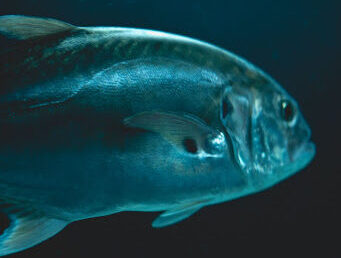In recent years, there has been a gradual shift in consumer consciousness, corporate practices, and policy approaches toward the welfare of chickens in the egg industry. Not only has the public outcry against battery cages intensified but there is also an echoing concern for animal welfare extending to other animals, including for aquatic animals. Rising awareness of the ethical implications of intensive animal agricultural practices is resulting in acknowledgement of sentience of animals in the food industry. Overlapping patterns can be identified in the welfare issues faced by layer chickens in the egg industry and those experienced by fishes and shrimps bred for aquaculture, as these species undergo similar forms of exploitation.
The dialogue on battery cages serves as a focal point in the discussion of animal welfare and ethical considerations of intensive animal farming. All stakeholders emphasize the necessity of allowing chickens to move freely, express their natural behaviors to ensure their physical and psychological well being and reduce cruel practices during handling and slaughter.1 These issues manifest in the aquaculture industry as well since all forms of intensive animal farming industries involve adopting cost-effective means of maximizing output.2 Fishes and shrimps reared for the aquaculture are inhibited in free movement and from expressing their natural behaviors.3 High stocking density and crowded enclosures that also cause injuries, poor water quality with low dissolved oxygen, high plankton levels and concentration of nitrates, nitrites and ammonia, and the non-therapeutic use of antibiotics and chemical fertilizers have raised concerns about the physical and mental stress experienced by the species raised in aquaculture. Rough handling during capture, transportation, and processing in both industries further exacerbates injuries and stress, underscoring the urgent need for humane treatment and better transport practices.
The gradual phasing out of battery cages in favor of more humane alternatives reflects a growing collective understanding of the importance of animal welfare standards in modern food production systems. The deplorable conditions within battery cages have drawn widespread condemnation and have triggered public demands for improved living standards for layer chickens. The growth of fish and shrimp farming, or aquaculture, has been accompanied by a recommendation of the gradual phasing out of intensive systems and similar welfare interventions for improved welfare standards.
These interventions encompass various strategies to promote the physical well-being of the animals, such as enhancing feed quality through feed fortification, minimizing stocking density, prohibiting mutilation and access to natural daylight and photoperiods. Additionally, measures aimed at fostering mental well-being include providing adequate space allowance to spread wings or swim freely, incorporating structural or occupational enrichment such as perches, nest boxes and litter to forage for chickens and silt, sand, incubation substrates to burrow, play and interactive feeding opportunities for fishes. Safe and compassionate animal handling practices are also emphasized through education and training of handlers and use of technology that reduces stress in animals.
High stocking densities, overcrowding, and stressful conditions can lead to behavioral abnormalities in fish and chickens. These issues manifest in various ways, such as feather-pecking and aggression in chickens and fin-nipping and aggression in fish. Chronic stress and behavioral problems not only affect the welfare of the animals but can also lead to stress, reduced immunity and increased health issues.
In the pursuit of higher productivity, both layer chickens and fish are subjected to trait selection. These species are also subjected to continuous reproductive cycles without adequate rest periods. Layer chickens are trait-selected for increased egg production which results in physical degradation, compromised immune systems, and a reduced lifespan for layer chickens. Similarly, the overuse and early puberty of farmed fish can affect growth rate, health, behavior, welfare, survival and negative genetic effects, impacting the long-term sustainability and welfare of fish populations.
As with layer chickens in the egg industry, there is a growing acknowledgment that the welfare of fishes in aquaculture is an essential aspect of ensuring the long-term sustainability of the global food system.
Ultimately, the parallels between the evolving concerns for the welfare of layer chickens and fish underscore a broader shift in societal values. The heightened awareness of animal welfare across diverse food industries reflects an evolving ethical consciousness and a growing recognition of the interconnectedness of all living beings. As consumers, corporations and policymakers continue to prioritize ethical practices and sustainability, it is imperative to foster a holistic approach to animal welfare that encompasses not only land-based creatures but also the often-overlooked denizens of life under water. By acknowledging the shared responsibility we have towards all living beings, we can pave the way for a more compassionate and sustainable future for both terrestrial and aquatic life.

